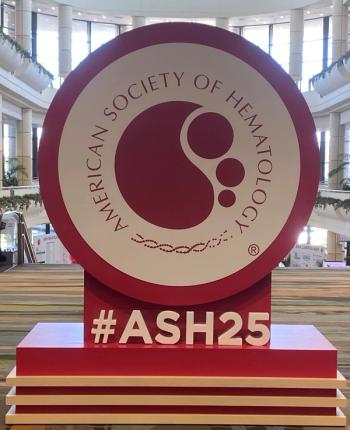
Can Early Screening Reduce Breast Cancer Mortality Among Childhood Cancer Survivors?
In survivors of childhood cancer, early initiation of annual breast cancer screening with MRI, with or without mammography, may reduce breast cancer mortality by half or more, according to a study published in Annals of Internal Medicine.
In survivors of childhood cancer, early initiation of annual
Currently, the use of mammography in individuals younger than 30 years is controversial, and the practice is not recommended by the American Cancer Society or National Comprehensive Cancer Network.
However, a recent Swedish
When it comes to children, “improvements in treatment for childhood cancer during the past 5 decades have resulted in remarkable survival increases, with more than 80% of children diagnosed today expected to live 5 years or longer,” authors wrote. But, “despite this success, survivors face very high risks for treatment-related death and late effects, including secondary breast cancer.”
In a comparative modeling study, researchers assessed the benefits, harms, and cost-effectiveness of breast cancer screening strategies in childhood cancer survivors. Data from the Childhood Cancer Survivor Study (CCSS) were used in computer simulation models to estimate clinical benefits and additional outcomes of breast cancer screening among childhood cancer survivors previously treated with chest radiation.
The CCSS is a multi-institutional cohort study representative of the US population. It encompasses a longitudinal follow-up of North American 5-year survivors of common types of childhood cancer diagnosed before 21 years between 1970 and 1999.
The models included data from all female subjects with a history of chest radiotherapy. Strategies evaluated by the models included “no screening; digital mammography with MRI screening starting at age 25 (current Children’s Oncology Group [COG] recommendations), 30, or 35 years and continuing to age 74 years; and MRI only starting at age 25, 30, or 35 years and continuing to age 74 years.”
Researchers estimated efficacy by assuming a 100% adherence to screening and that all subjects received the most effective therapy available at the time of diagnosis. CCSS subjects included in the current study were already at a 21.9-fold higher risk for breast cancer compared with average-risk women. To address this risk, researchers applied age-specific standardized incidence ratios from CCSS participants to breast cancer incidence rates in the computer models.
US 2018 Medicare reimbursement rates and published estimates were used to estimate cost of screening and diagnostic evaluation.
Investigators found that “without screening, the lifetime risk for dying of breast cancer among childhood cancer survivors previously treated with chest radiation was 10% to 11% across models.”
The models also revealed:
- Compared with no screening, annual mammography and breast MRI starting at age 25 years averted the most breast cancer deaths (56% to 71%) and increased life-years gained by 1317 to 2544 years per 1000 women.
- Over their lifetime, 1000 women would have 4188 to 4879 false-positive screening and 1340 to 1561 benign biopsy results.
- All screening strategies, regardless of starting age and screening method, reduced breast cancer deaths by 50% or more.
- For all strategies, the number of false-positive screening results per death averted ranged from 31 to 85 per 1000 women and the number of benign biopsy results per death averted was 11 to 27 per 1000 women across models.
- Incremental cost-effectiveness ratios for annual mammography with MRI starting at age 25 years vs no screening showed cost-effectiveness at the common threshold of less than $100,000 per quality-adjusted life-year gained.
“Screening with mammography and MRI starting at age 25 years, as currently recommended by the COG, is projected to avert half of the expected breast cancer deaths among these high-risk survivors,” the researchers concluded. Following this annual schedule, a survivor can expect an average of 4 to 5 false-positive screening results and 1 to 2 benign biopsy results throughout her lifetime. The results also find commencing screening at age 30 is cost-effective, while MRI alone may be a reasonable screening strategy at younger ages.
However, the results did not account for the risk of radiation-induced breast cancer from mammography screening, as the exposure is small relative to total radiation dose in women previously treated with chest radiation.
“Our findings underscore the importance of making sure that young women previously treated with chest radiation are informed about their elevated breast cancer risk and the benefits of routine screening,” the authors wrote.
Breast cancer screening guidelines should also emphasize the importance of MRI screening among survivors. An additional priority for policy makers should be identifying effective policies and interventions to reduce barriers to screening, thus ensuring comprehensive and coordinated care for high-risk survivors, the authors argued.
Reference
Yeh JM, Lowry KP, Schechter CB, et al. Clinical benefits, harms, and cost-effectiveness of breast cancer screening for survivors of childhood cancer treated with chest radiation. Ann Intern Med. Published online July 6, 2020. doi:10.7326/M19-3481
Newsletter
Stay ahead of policy, cost, and value—subscribe to AJMC for expert insights at the intersection of clinical care and health economics.













































